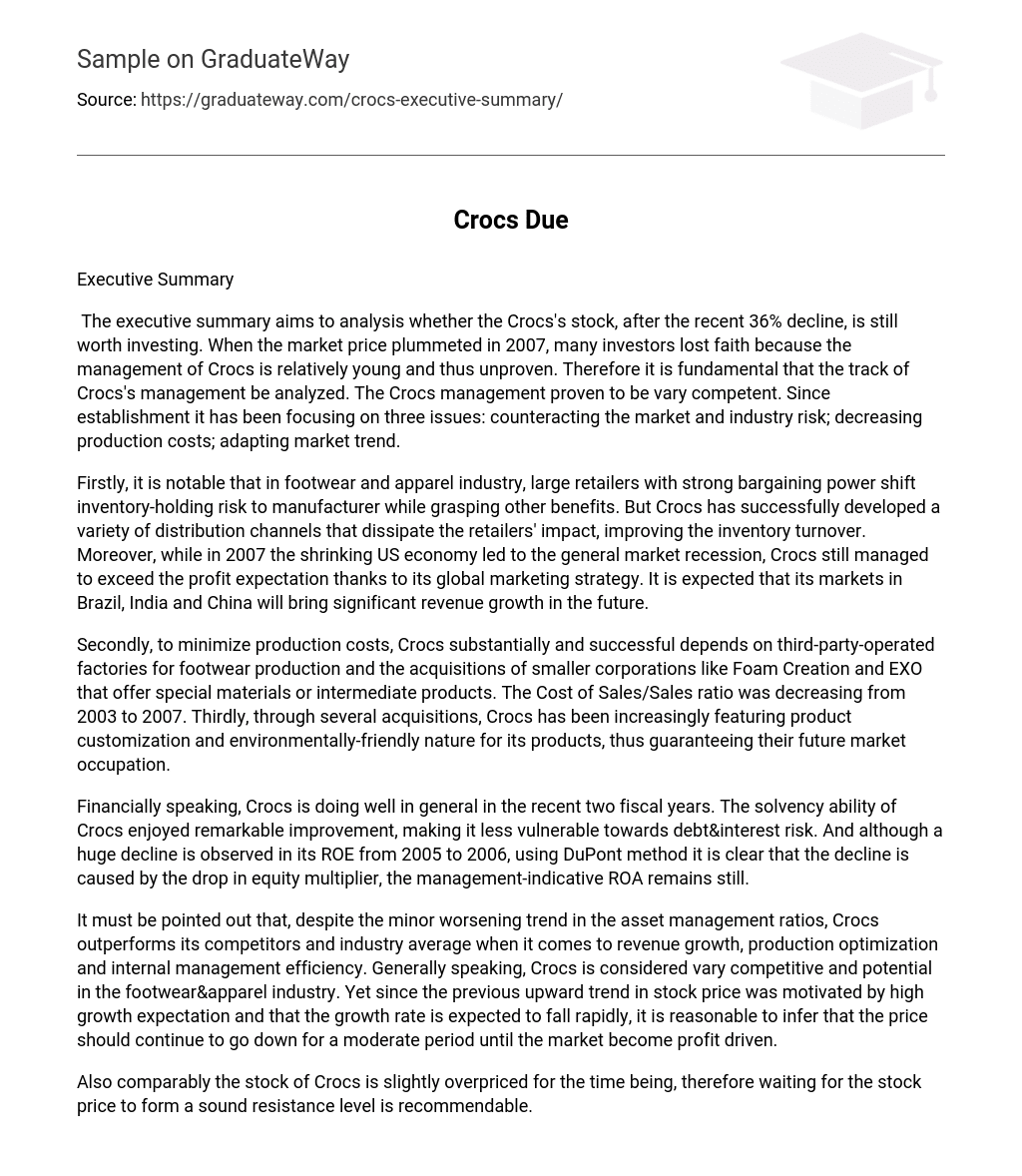Executive Summary
The purpose of the executive summary is to evaluate the investment potential of Crocs’s stock, which has experienced a significant decline of 36% recently. During the market downturn in 2007, many investors became pessimistic due to the relatively young and unproven management team at Crocs. Therefore, it is crucial to analyze the track record of Crocs’s management. However, the management team at Crocs has proven to be highly capable. Since its inception, they have prioritized addressing market and industry risks, reducing production costs, and adapting to market trends.
Large retailers in the footwear and apparel industry have the ability to shift their inventory-holding risk to manufacturers and gain other advantages. However, Crocs has effectively created various distribution channels that mitigate the influence of retailers, resulting in improved inventory turnover. Despite the overall market recession caused by the shrinking US economy in 2007, Crocs surpassed profit expectations due to its successful global marketing strategy. The company anticipates significant revenue growth in the future through its markets in Brazil, India, and China.
Furthermore, in order to reduce production expenses, Crocs heavily relies on third-party-operated factories for footwear manufacturing and has also acquired smaller companies like Foam Creation and EXO that provide unique materials or intermediate products. The Cost of Sales/Sales ratio witnessed a decline from 2003 to 2007. Additionally, through various acquisitions, Crocs has been incorporating product customization and an eco-friendly approach to ensure its products’ long-term market dominance.
In terms of finances, Crocs has performed well overall in the last two fiscal years. The company’s solvency has greatly improved, reducing its susceptibility to debt and interest-related risks. Despite a significant decrease in its Return on Equity (ROE) between 2005 and 2006, an analysis using the DuPont method indicates that this decline is primarily due to a drop in the equity multiplier, while the management-indicative Return on Assets (ROA) remains steady.
Despite a slight decline in asset management ratios, Crocs surpasses its competitors and the industry average in terms of revenue growth, production optimization, and internal management efficiency. Overall, Crocs is seen as highly competitive and has great potential in the footwear and apparel industry. However, since the previous rise in stock price was driven by high growth expectations and the growth rate is projected to decrease significantly, it is reasonable to expect the price to continue declining for a moderate period until the market becomes focused on profitability.
It is advisable to wait for the stock price of Crocs to reach a stable resistance level as it is currently slightly overpriced.





